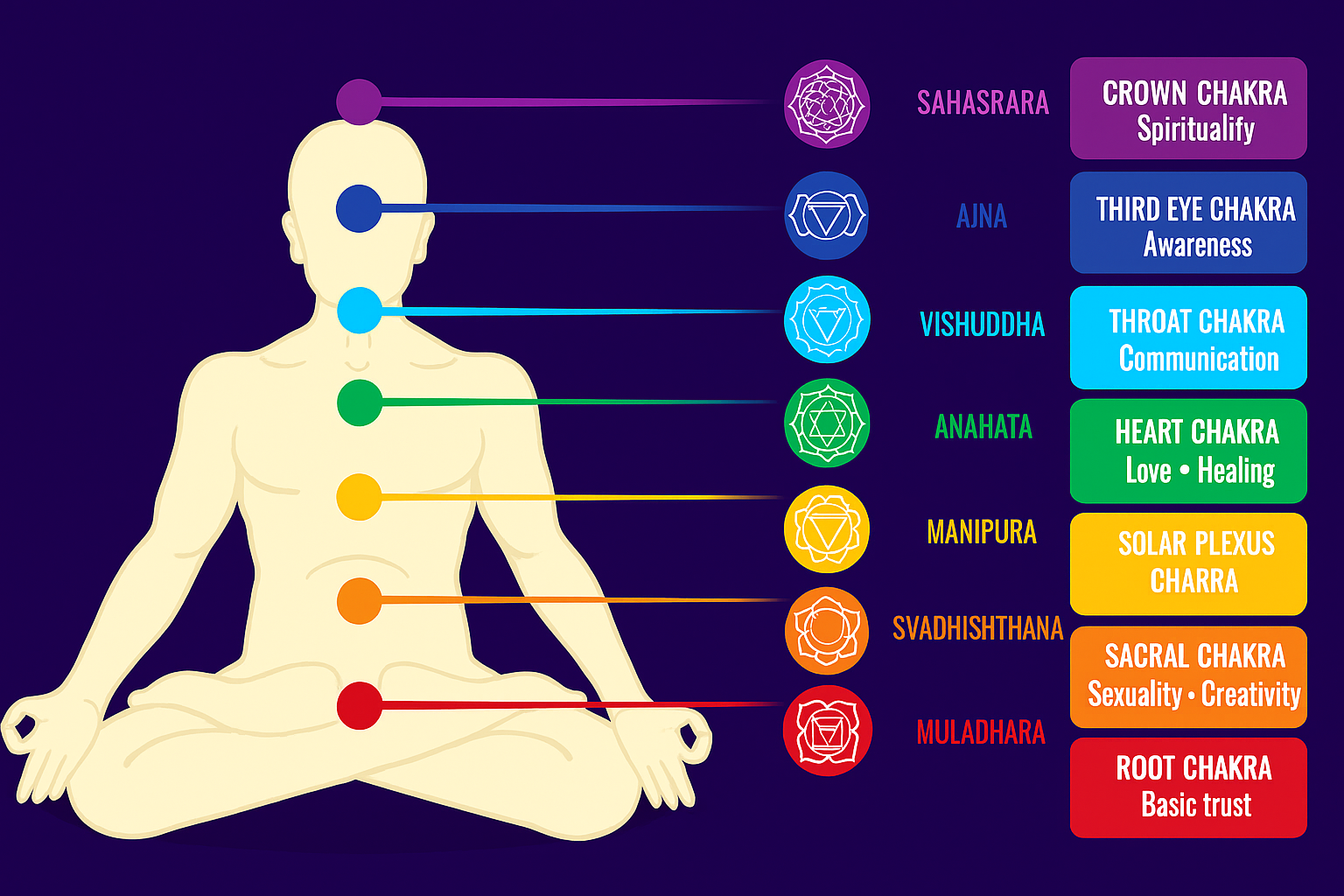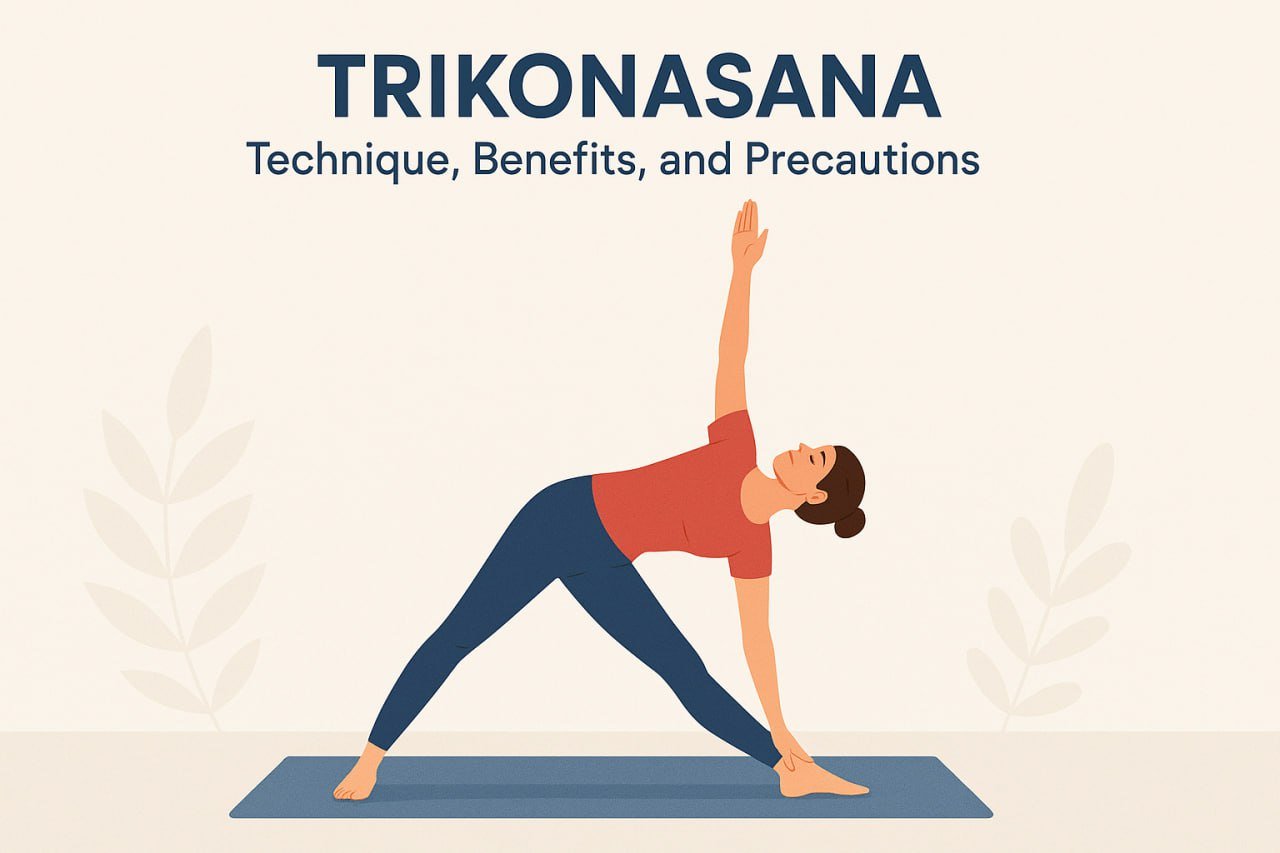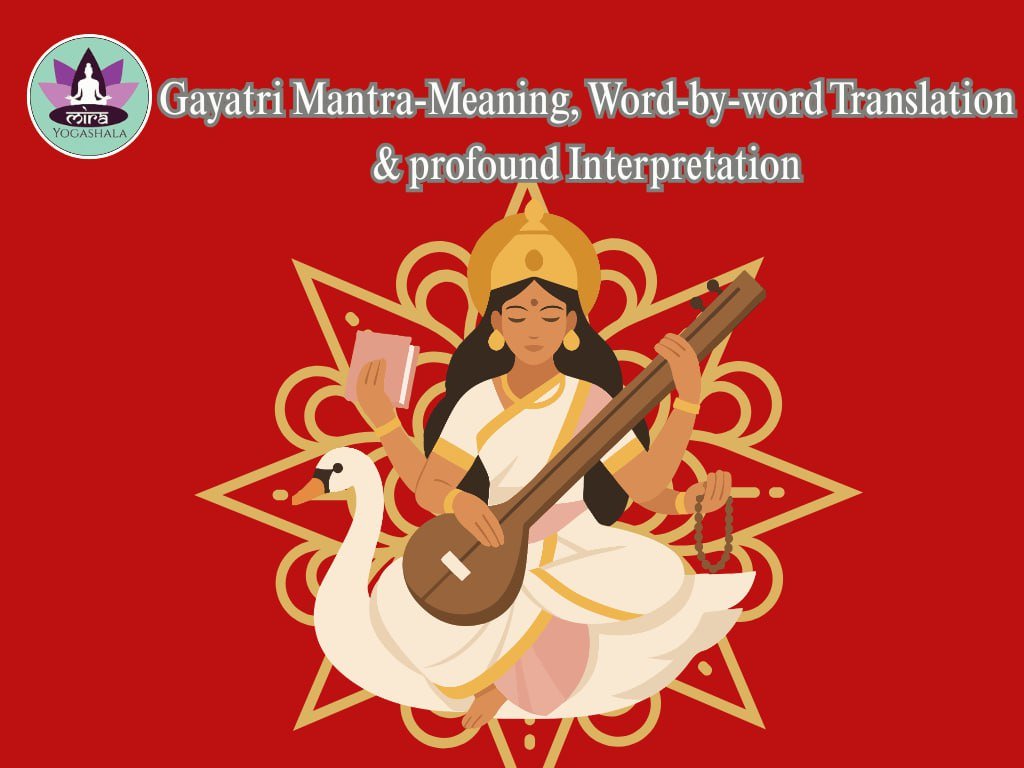Chakras is a Sanskrit word that means wheel or a circle. Do you ever think our bodies also contain chakras? As per historical texts, chakras are centers of energy in our body that regulate the flow of Pranic energy throughout the body.
In the human Body, everyone experiences some days when they are fully energized and ready to face anything that comes their way, and sometimes when motivation is low, and getting up to bed feels like a serious challenge. Energy in our bodies has a direct impact on our mental and physical health. When energy becomes imbalanced, it can affect in our health, how we think, feel, and function daily.
Each chakra represents a unique symbol or mandala, composed of various geometric shapes. These symbols have been described in tantric texts and have specific meanings related to personal spiritual growth. Gaining insight into the symbolism of chakras can enhance your understanding of your spiritual path and way to live life in a meaningful way.
What are chakras, and where are these energy centers in our bodies? How can we know if our chakras are out of balance? Are there ways to balance these energy centers if they are imbalanced? What are the symbols associated with each chakra, and what do they represent? Let’s explore all these questions in this article.
A Complete Guide to the Seven Chakras and Their Meanings
There are many chakras within the body that control the flow of pranic energy, but the seven primary chakras, situated along the spine from its base, are the most prominently referred to in ancient scriptures.

1st chakras: Root chakra
No matter what path you choose in your life, having a strong foundation ensures flexibility; with strong basics, you can face any challenge that comes in your way.
The Muladhara, or Root chakra, is the first and most vital chakra for leading a balanced and practical life. It’s located at the base of the spine, and it is symbolized by the red colour. This chakra helps us keep grounded, providing a sense of stability, security, and overall well-being.
When the root chakra is inactive, an individual may experience feelings of fear, lack of ambition, and insecurity. And when the Chakra is overactive, an individual might become greedy, showing unnecessary possessions in a false sense of security. That’s why balancing this chakra is important for creating a solid foundation in life. Focusing on the Root, Muladhara chakra helps promote health, stability, and a feeling of contentment without going overboard.
The journey of personal growth begins here. If this chakra remains imbalanced or weak, it can cause progress in balancing other chakras, since a strong foundation is important for overall growth.
Root chakras – Symbol explanation
Each of the four petals of the lotus represents various facets of consciousness: Manas( mind ), buddhi (intellect), Chitta ( awareness ), and Ahamkara ( ego ). The Yellow square at the center signifies life force and stability. And the inverted triangle located at the center symbolizes the earth element.
Join Mira Yogashala for the Best Yoga Teacher Training Course In Rishikesh
- Yoga teacher training course in Rishikesh, India
- 100-hour yoga teacher training course in Rishikesh
- 200-hour yoga TTC in Rishikesh
- 300-hour yoga certification course in Rishikesh
- 500-hour yoga teacher training in Rishikesh
2nd chakras: Sacral chakra
There is a reason why some people are more creative and adventurous, and some people find themselves stuck in boring routines, whether they want to or not. This could be linked to an imbalance in the chakra system and can interfere with the flow of energy that we need for creativity and happiness. The svadhisthana, or sacral chakra, is the second main energy center in the human body; it’s located just below the belly button. It is closely linked to creativity, enjoying life, and expressing ourselves freely.
The sacral chakra is considered the hub of our feelings and is associated with aspects such as sexuality, intuition, self-worth, compassion, and our personal needs and desires. This chakra is symbolized by the orange colour. When the chakra becomes imbalanced or blocked, individuals may experience mood swings, depression, feelings of fear, and a lack of creative inspiration.
When this chakra is balanced, you may experience feelings of passion and fulfillment, along with an overall sense of well-being. It enables you to express yourself creatively and openly.
Sacral chakras – Symbol explanation
The six-petaled lotus represents six emotions that must be overcome in us to achieve balance in the svadhisthana chakra; namely, anger, jealousy, cruelty, hatred, pride, and desire. The circle defines the cycle of birth, death, and rebirth, while the link half-moon shape signifies the link between creativity and the lunar phases.
3rd chakra: solar plexus chakra
If you suddenly experience intense anger, struggles with ego, or find it hard to see things from others’ perspectives, it may indicate to balance your solar plexus chakra. This chakra, also known as Manipura, is the third chakra. It is located between the naval and the ribcage. This is closely linked to emotions such as ego, anger, and aggression. The meaning of manipura is “city of jewels,” and this chakra is commonly associated with the yellow colour.
The manipura chakra is associated with a person’s willpower, determination, and self-confidence. When this chakra is imbalanced, it can affect our physical health issues such as digestive problems, liver disorders, and diabetes. A blockage in this energy center may negatively impact self-confidence and may cause feelings of fear and uncertainty.
Solar Plexus Chakras – Symbol explanation
The ten petals represent the ten vital energies (Pranas) in our body. The upside-down triangle shows that energy from the lower three chakras is rising up to the higher chakras.
4th Chakra: Heart chakra
A loving heart is one that can forgive others while still caring for them deeply. It feels kindness, understanding, and sincere care for others. So, how does someone become such a loving person? The answer lies in the heart chakra, which is the fourth main energy center in our body. Which known as Anahata in Sanskrit, this chakra means “unhurt” or “free from pain.” It is situated in the middle of the chest, at the same level as the heart, and connected to organs like the heart and lungs.
This chakra acts as a bridge between the higher energy centers to the lower ones, and it is usually associated with green colour. When this chakra is balanced, it helps us to love people openly and forgive easily. When this chakra is blocked, an individual may feel feelings such as worry, anger, envy, or sudden changes in mood. If this heart chakra is too active, it could cause high blood pressure, irregular heartbeats, or other heart-related health problems.
Heart Chakras – Symbol explanation
The heart chakra is represented by the two triangles, one pointing upward and the other downward, forming a six-pointed star. This symbol represents the balance of masculine and feminine energies. It is a combination with the 12 petals representing 72,000 energy channels, or nadis (6,000 x 12 = 72,000). It also shows how anahata is the central point that connects the whole system.
5th chakra: Throat Chakra
If you express yourself easily and confidently, it means your throat chakra is well-balanced. The throat chakra is also known as visuddha or the fifth chakra, represented by the colour blue. It’s linked to our ability to communicate our thoughts and feelings smoothly and openly.
The Throat chakra is considered the center of all verbal communication. It controls the flow of energy around our throat, parathyroid, neck, mouth, jaw, and tongue. When this chakra is imbalanced or blocked, a person may find it difficult to express their feelings or may fear judgment when speaking.
A blocked throat often leads to difficulty in speaking the truth freely. May face problems such as headache and stiffness in the shoulders and neck. If someone’s throat chakra is overactive, they may talk excessively and dominate in conversations, usually not giving others a chance to speak. It’s important to keep this chakra balanced because healthy communication plays an important role in how a person feels and interacts with others.
Throat Chakras – Symbol explanation
The triangle in this symbol defines energy rising upward, gathering knowledge on the path to understanding. The 16 petals are connected to the 16 vowels in Sanskrit. Since these vowels are pronounced softly, and also represent the light, airy nature of communication.
6th Chakra: Third Eye Chakra
When you have the ability to observe the world with a sense of detachment and recognize the connection and interaction between the spiritual and physical realms, you are nurturing a well-balanced third eye chakra, or Ajna. Located between the eyebrows and symbolized by the colour indigo. This chakra affects the eyes, head, and the lower regions of the brain.
The third eye chakra is linked to intuition, intellect, and wisdom. It helps us to see the bigger picture and guides us in making wise and spiritual decisions. When we are unable to hear our inner voice or fail to notice what’s obvious, it usually indicates that this chakra is blocked and needs attention. A blocked third eye can make you more judgmental, intense, anxious about the time coming in future, and more introverted. On the other side, if this chakra becomes overactive, your intuition may become overwhelming or overly intense.
Third Eye Chakras – Symbol explanation
There is an inverted triangle that symbolizes the path of true enlightenment. This triangle represents the process of gathering and expanding the knowledge and lessons from the lower six chakras, combining them into your consciousness.
7th chakra: Crown Chakra
The crown chakra, also known as Sahastrara, is the seventh and the highest spiritual energy center in the body. This is different from other chakras; it is rare to fully access this chakra. It serves as a connection to your higher self and can lead to elevated energy levels. When these chakras are opened or balanced, individuals usually experience greater inner wisdom and a deeper connection with the universe. If this chakra is not balanced or imbalanced, a person may feel disconnected from the outside world and lack a sense of purpose. Regular meditation practice is key to opening and balancing the crown chakras.
Crown Chakras – Symbol explanation
This symbol features a circle and a lotus flower, symbolizing our connection to Brahma. It also signifies our divine unity with other persons and the universe.
Note: You can join our spiritual yoga retreat in Rishikesh, India
FAQ:
Q.1: What are the 7 chakras of the body?
A: The 7 Chakras are the vital energy hubs in our body connected with the spine, that influence health, emotions, and spiritual awareness. From Root chakra to Crown Chakra, each helps us to grounding, creativity, confidence, love, communication, institution, and higher consciousness. Learn how to balance all these chakras with yoga, meditation, and overall well-being.
Q. 2: How do I activate my 7 chakras?
A: Activating the seven chakras involves combining practices that bring up with both body and mind. Techniques such as meditation, yoga postures (asana), breathing exercises (pranayama), mantra chanting, and proper guidance can help us restore and reactivate these energy centers in our body. Connected with the spine, from the root chakra at the base to the crown chakra at the top of the head, each chakra plays a main role in our physical health, emotional stability, and spiritual growth.
Q.3: Can beginners learn chakra meditation and yoga?
A: Yes! At Mira Yogashala yoga school in rishikesh, India, we warmly welcome beginners and teach simple, step-by-step yoga practices that gently activate and balance the chakras in a safe and supportive way.
Q.4: How does yoga help with chakra healing?
A: Yoga practice balances the chakras through asanas, pranayama, meditation, and mantra chanting, which remove blockages and help us to restore energy flow. Yoga practice enhances physical vitality, mental clarity, and inner peace. At Mira Yogashala, we guide students in applying these techniques to experience effective chakra healing.
















